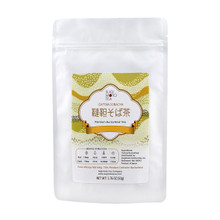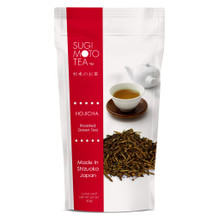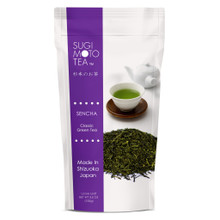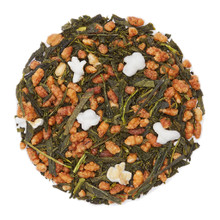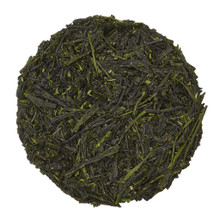Obon Festival History and Guide
The Obon festival is one of the biggest festivals in Japan alongside that rivals New Year’s and Golden Week. Here’s what you need to know about it.
Guide Contents:
- What is Obon?
- When is Obon Celebrated?
- How is the Obon Festival Celebrated?
- Obon Celebration of the Sugimoto family
Obon Festival | Everything You Need to Know About This Japanese Summer Holiday
1. What is Obon?
Obon (also known as Bon) is a Japanese holiday that honors the dead. During this time, people return to their hometowns to pay respects to their ancestors. They do this through customs like sweeping graves of departed relatives, giving temple offerings, and displaying lanterns that help guide the spirits to the other realm. Another popular tradition is Bon Odori, which refers to traditional dances performed during Obon.
2. When Is Obon Celebrated?
There are different dates for the Obon festival depending on which calendar the organizer follows. The differences come from the shift from the lunar calendar to the Gregorian calendar.
- Shichigatsu Bon / “Bon in July” (July 15) — Shichigatsu Bon is the period traditionally celebrated in the Kanto and Tohoku regions.
- Hachigatsu Bon / “Bon in August” (August 15) — Hachigatsu Bon is the most celebrated among all three Obon dates.
- Kyureki Bon / “Old Bon” (Between August 8 and September 7) — Kyureki Bon follows the traditional date of Obon (15th day of the seventh month of the lunar calendar) so when it’s celebrated differs every year. It’s celebrated mainly in Okinawa prefecture.
While Obon isn’t a public holiday, it’s still typical for employees to take leave to celebrate the holiday.
3. How is the Obon Festival Celebrated?
While the Obon Festival has its roots in religious rites, these days, it also serves as a social gathering where attendees can experience Japanese culture and enjoy live entertainment provided by musicians and dancers. For the Japanese, it’s also a chance to take some time off to return to their hometown, spend time with family, and perform the Obon customs that have existed for centuries.
From washing graves to lighting lanterns, and traditional dances, there are several customs that the Japanese follow during Obon. Here’s what you need to know about each of them.
◈ Haka Mairi: Washing the Graves of Deceased Relatives
"Haka mairi" translates to "visiting the grave". It is the act of cleaning the graves of ancestors. Haka mairi can be done anytime throughout the year, but it’s customary to do it during Obon. Aside from washing the grave, people also offer food and flowers and light a candle/incense.
◈ Lighting Fires / Lanterns
Depending on the region, people customarily light fires or chochin (paper lanterns) to welcome the spirits (Mukaebi). Likewise, these are also used at the end of the festival to guide the spirits back to the afterlife (Okuribi).
Related to this tradition, the Gozan Okuribi Ritual Fires is a ceremony unique to Kyoto. During this event, ceremonial bonfires are lit on five mountainsides to provide a good sendoff to the spirits. These bonfires are large enough to be seen from a distance and are created in the shape of the kanji characters for “big,” “wondrous dharma,” and in the shapes of a torii gate and a boat.
◈ Bon Odori: Traditional Obon Dances
History of Bon Odori
Bon Odori refers to the traditional dances performed during the Obon festival. There are several interpretations about this tradition and this can vary depending on the region.
One way of looking at it is from the Buddhist roots of Obon, which is the tale of Maudgalyayana, Upon saving his mother from the realm of hungry ghosts and seeing how good she had been to him throughout his life, Maudgalyayana rejoiced by dancing.
Similarly, Bon Odori was seen as a way of welcoming the spirits who visit this world during Obon and to see them off at the end of the holiday. It dates back to around five centuries ago and has its roots in Nembutsu Odori, a Buddhist ritual that involves dancing and chanting.
These days, the Bon Odori dances provide entertainment during the festival and preserve a tradition that has been performed for centuries. They’re performed in public places, such as on the street (resembling a street party), parks, and temple grounds.
Regional variations in Bon Odori dances can be seen in the different dance styles, props, and music used during the performance.
Differences in Bon Odori Dance Styles
The dance style of a Bon Odori dance can be inspired by the area it comes from. For example, the Tanko-bushi is a dance inspired by the song of the same name from Tagawa City, which was a coal-mining town. Tanko-bushi means “Coal Miners’ Song” so the steps are inspired by the way coal miners move. These include digging, throwing the basket of coal on your back, and pushing the cart.
If you’re interested in watching or learning the Tanko-bushi dance, check out this video.
Regardless of where it’s being performed, the steps in a Bon Odori dance are typically easy-to-follow. The moves also tend to be related to the lyrics of the song so they can be easily passed on and allows anybody to join regardless of skill or familiarity with the dance. It’s typically danced in a circle, with the better dancers in the middle and those who are just starting to learn on the outer circle.
Different Props and Other Items Used in Bon Odori
Aside from dance styles, regional differences in Bon Odori can also be seen in the items used in the performance. Here are some of the items you’ll typically see in Bon Odori.
- Yagura — A yagura is a raised platform that serves as a stage for the performers (dancers, musicians, and singers). It’s typically decorated with red and white paper since these are considered lucky colors. You’ll also see colorful lanterns hanging on the yagura.
- Attire
- A yukata refers to the traditional cotton robe worn by performers and even attendees during the Obon festival. Its light material is perfect for the summer heat since it lets air through. It can either come in a single color, which is typically what men wear, and in different colors and patterns for women and children.
- Some performers have a specific attire unique to that festival, such as the hanui worn by performers in the Nishimonai Bon Odori.
- Traditional musical instruments like the Taiko (bass drum), Surigane (gong), Kodaiko (snare drum), Yokobue (flute), Tsuzumi (hand drum), and Shamisen (banjo)
- Props like kachi-kachi (wooden castanets), tenugui (patterned towel), straw hat decorated with flowers (specific to Yamagata’s Hanagasa Odori)
Music During Bon Dance Festivals
Traditional Bon Odori dances are performed to the tune of Obon folk songs, which vary per region. Musicians and singers accompany the Bon Odori dances.
Check out this video if you want to learn more about regional Obon songs.
These days, live music is still typical in Obon festivals, but more contemporary elements, such as newer songs, are also being integrated. For example, in an Obon celebration in Tokyo’s Nakano City, people danced Bon Odori steps to Living on a Prayer by American rock band Bon Jovi.
Where to Experience Bon Dance Festivals
While you can experience an Obon festival in Japan, here are some of the best Bon Odori festivals to check out the next time you’re in Japan during Obon.
4. Obon Celebration of the Sugimoto Family
For the Sugimoto family, Obon was the time all relatives came together to Zenichi’s (the person who started Sugimoto Tea Company) house and celebrated their ancestors. Looking back toward his younger years, Kyohei remembers that his grandfather (Zenichi) decorated the Buddhist household altar and built a fire in the yard for Mukaebi and Okuribi. The Sugimoto tea factory was closed during these celebrations, and all Zenichi’s kin came to see him from different cities.
Today, Hiroyuki, the current president of Sugimoto Seicha, has taken over this role. He says his decoration of the altar is simpler than what Zenichi (his father) used to do, but he uses bamboo grass and puts various offerings in front to welcome their ancestors’ spirits. A Buddhist monk is invited to the house to pray, and Mukaebi and Okuribi are still in place in the same yard. All relatives spend time relaxing in Kanaya during the Obon holiday.
Want to learn more about the unique culture of Japan? Check out our blog for more articles that feature Japanese culture!
READ NEXT: Golden Week | Japanese Holidays Guide















